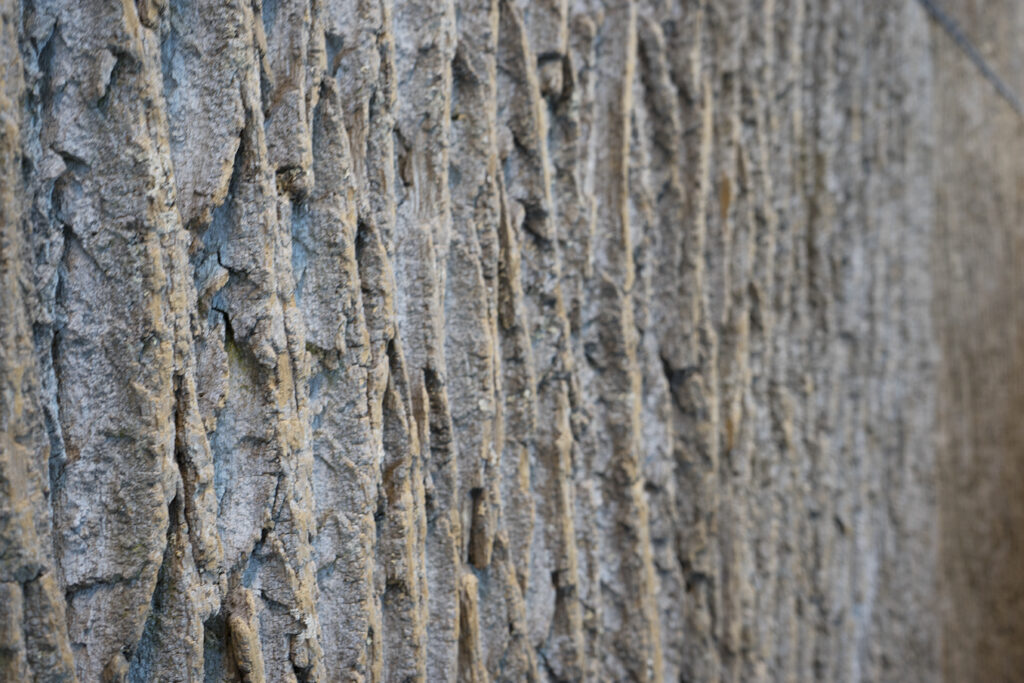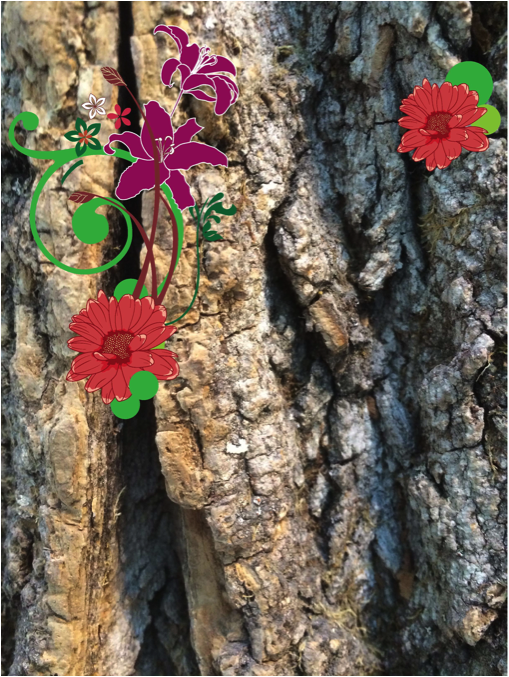

When first installed during the 2009 renovations of the 2 W. 13th street building, the Bark—a wall installation that frames the New School Orientation Room—felt like a breath of fresh air, a touch of nature in a cold landscape of metal and concrete. Although I walk by the Bark almost everyday, the wall has become an invisible element in the space—a useless decoration. I had expected the wall to transform, to grow, or show the lifelines of the natural world penetrating the ever-changing landscape of the New School’s diverse culture. Every now and then, I still glance over as if looking for a surprise, a change in the wall; maybe finally, after all these years, the Bark will come alive, springing living organisms and flourishing ecosystems that showcase the symmetries and movements that we talk about so much in design theory—the organizational systems of the natural world. Today, after five years have passed, this “natural” element feels confined in the space, cramped by announcements, and left to die; it carries an atmosphere of decay, of neglect, as opposed to standing as a symbol of an ecological balance within school life.
As stated in the New School website (http://www.newschool.edu/sustainability/) the school is determined to “reduce the institution’s environmental footprint and carbon emissions.” The New School commitment to sustainability is exemplified across the board through various internal initiatives—such as the Parsons’ Sustainable Design Review (SDR), the Sustainability Graduation Pledge overseen by the Graduation Pledge Alliance—and public engagements—such as the American College and University Presidents’ Climate Commitment, The Sustainability, Tracking, Assessment and Rating System (STARS). Due to The New School’s efforts to create new discourses of sustainability, and embrace sustainable processes, my aversion to the Bark has grown exponentially since it seems to be a banal ornament with no function. The Bark stands as a trendy facade that negates function in service of beautification, debilitating with its presence the school’s efforts to foster a solid culture of sustainability.
However, I also see new possibilities of transforming The Bark into a hub for experimenting and practicing sustainability. For instance, the First Year Sustainable Systems class could take the Bark as an experimental ground in order to ignite a culture of sustainability beyond the classroom, making The New School’s efforts visible to a larger community; by using the Bark as a performative platform The New School’s initiatives towards sustainability could be strongly represented.
Could the Bark be transformed so as to be alive as a temporal and renewable installation that propels new discourses of sustainability, to be experienced everyday anew?
Because of the complexity of sustainable systems—and the implications of being sustainable—that we face today, has the use of natural materials for “beautification” become the new sustainability?
Could the Bark transcend its own stillness—of being a surface—into becoming a space with agency that strives to cultivate a consciously aware, sustainable community here at the New School?
Gigi Polo (Niberca Lluberes Rincón)
Faculty, Parsons

